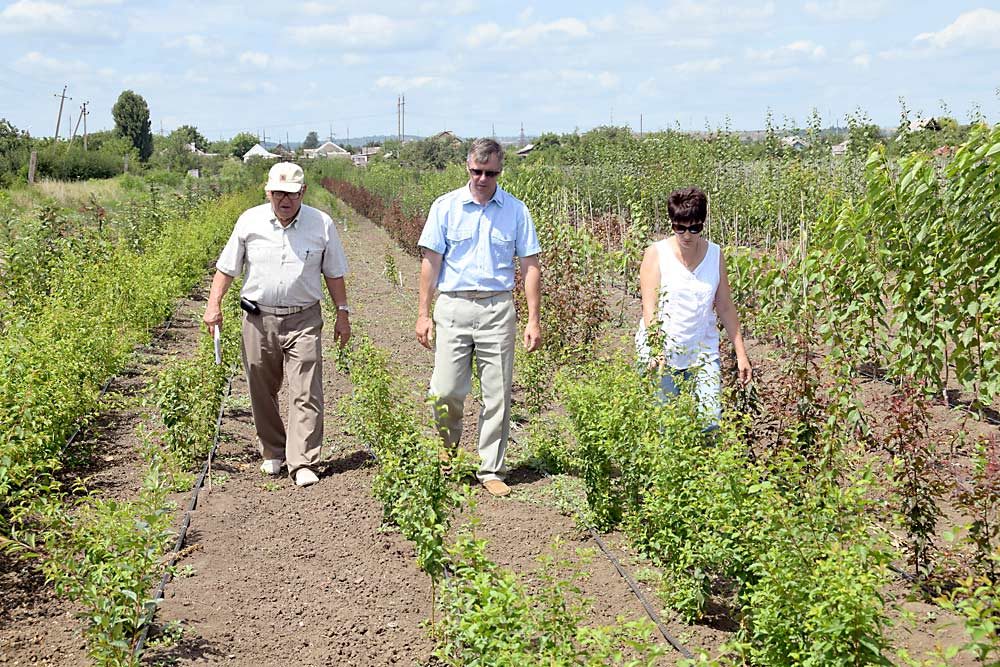
Stone fruit growers likely recognize the Krymsk name through the popular peach and cherry rootstocks, but few know that it’s named for a Russian agricultural research station where a family of breeders has been quietly running a successful stone fruit breeding program for more than 50 years. Rootstocks are commonly named for the place they were developed, but in this case the place — in the midst of a diverse ecosystem of wild Prunus species — set the foundation for the Eremin family’s success.
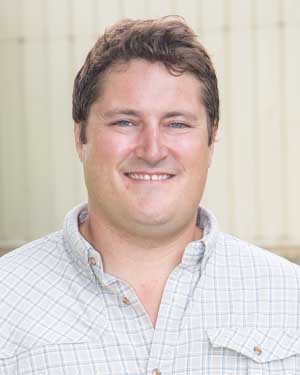
“Krymsk 86 is far and away their biggest success story,” said Adam Weil, co-owner of Oregon-based Varieties International, which holds the exclusive license for the Krymsk rootstocks, including K.86 and cherry rootstocks K.5 and K.6, outside of Russia. Originally developed for peach, K.86 was adopted by almond growers to expand into previously unsuitable soils in California.
Last fall, Victor Eremin, director of the Krymsk Experimental Breeding Station, came to Washington State University with Weil to collect budwood of his family’s own rootstocks from the foundation blocks at the Clean Plant Center Northwest. It’s easier to fly home with the bundles of sticks than ship budwood and risk a loss in transport, Eremin said.
“Virus-free wood is not as common in our region, but it’s so important,” Eremin said. The Prosser clean plant operation is the best in the business, he added. “That’s why we bring our trees here.”
Walking through greenhouses crowded with potted plants that look indistinguishable to the untrained eye, Eremin stopped at one selection that looked like family. Checking the tag reveals, yes, it’s a Krymsk.
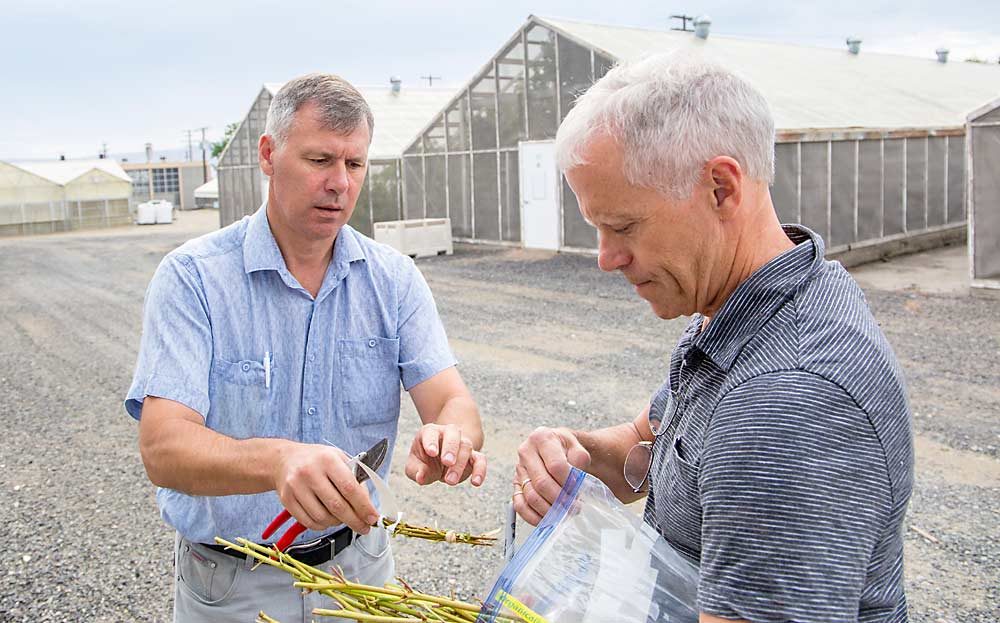
That kind of familiarity comes from being born and raised in a breeding program. The origins of the Krymsk rootstocks date to the 1960s, when his father, Gennadii Eremin, began breeding for peach and cherry rootstocks at the research station located in the Southern Russia region of Krasnodar, near the Black Sea and the foothills of the Caucasus Mountains. It’s one of 11 government-run stations under the Vavilov All-Russian Institute of Plant Genetic Resources.
The germplasm come from wild Prunus species from around the region — collected on scientific expeditions that also served as family camping trips, Eremin recalled.
“Every summer, we took expeditions,” he said, starting when he was just 7 years old. “Each region has its own conditions and species, and those wild conditions give them more resistance for soils and weather and water.”
For example, the almond growing region in California’s Central Valley is similar to the conditions in the desert of Southern Russia. Russia is so large and geographically diverse that “we can match all of the zones and climatic conditions,” Eremin said.
“His dad’s genius is in seeing these conditions and then getting them to express in the new crosses,” Weil said.
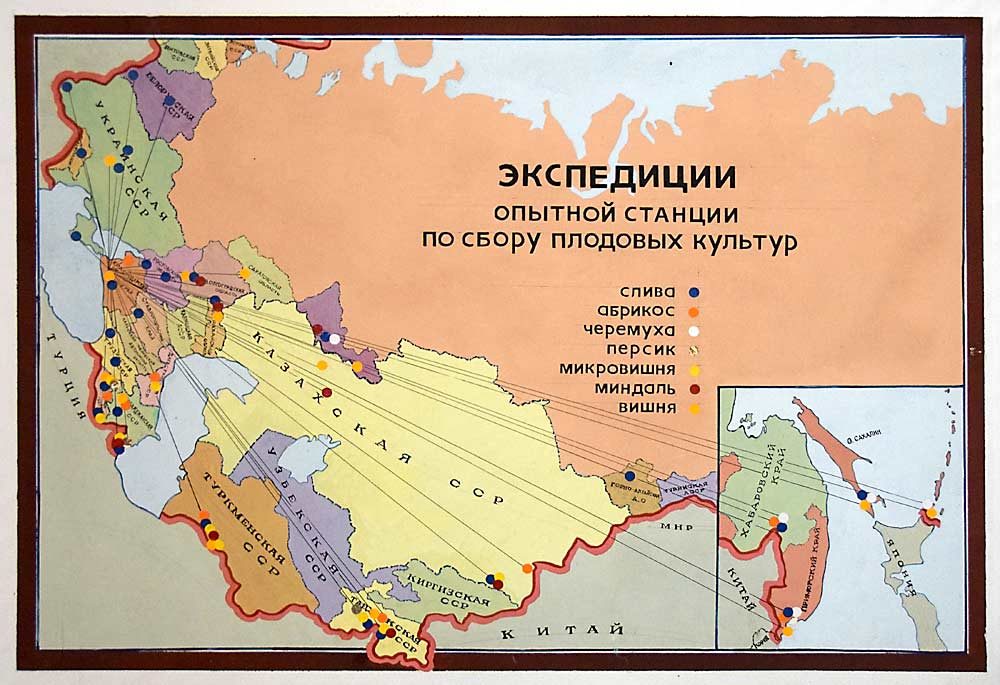
Growing up with rare Prunus collecting as family fun, it’s perhaps not a surprise that Victor Eremin decided to pursue plant breeding as well. He met his wife, Oxana, at the local agricultural college, and now she conducts the cherry scion breeding at the center. Now, they are hoping their son takes an interest in following the family career path.
“I’ve been at the station 40 years if you start when I was 7,” he said. The station itself is in the foothills, where the air from the cold Siberian flats hits the warm mountains, creating hot, humid summers and cold winters that test plants. “That’s good conditions for scientists, but bad for commercial growers,” he said.
But they serve a growing Russian sweet cherry industry. Eremin estimated that over half a million trees are now planted on Krymsk rootstocks in the region, which perform better than Mazzard and Mahaleb roots in the region’s heavy soils.
“It’s very important to us not just to do science for the sake of science but to do science for business production,” he said. “We’re trying to create rootstocks to make people money.”
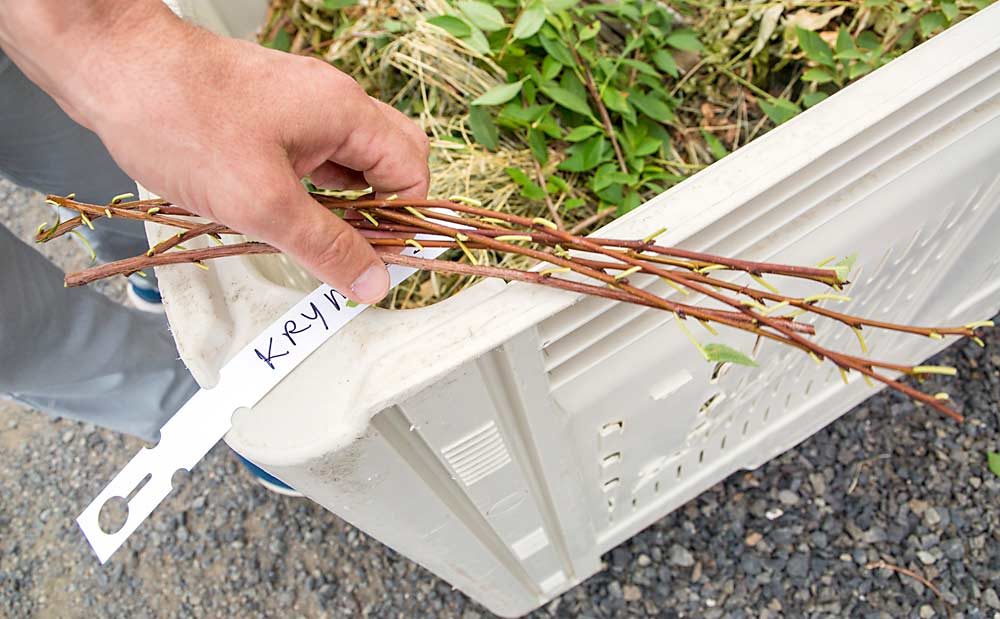
In the early 1990s, Gennadii realized his findings would benefit growers in the U.S. and Western Europe. In 1996, the Eremins connected with Dave Weil, Adam’s father, on a tour of Washington and launched a partnership. Victor came to live with the Weils for several months, learning about the nursery business and the needs of U.S. growers, he said.
Through that relationship, they’ve found great opportunities translating the traits of their germplasm to growers halfway around the world — and some challenges. For example, it’s hard to develop a nematode-resistant rootstock for California peach and almond growers if you don’t have those pests. Eremin said he’s hopeful new genetic screening tools will help him test for nematode resistance without the nematodes.
His own breeding work focuses on peach scions and rootstocks, but it’s on the back burner now that he serves as director of the station, which employs 163 people and encompasses 4,300 acres. But his father, 87, who served as director from 1968 to 2001, still comes to work every day. “He’s never stopped thinking about new rootstocks,” Eremin said of his father.
In fact, part of his visit to the Pacific Northwest was to look at trial blocks of a few new, not yet released selections. They hope these new ones offer better precocity and better stress resistance, he said, but they need several more years of testing. •
—by Kate Prengaman






Leave A Comment